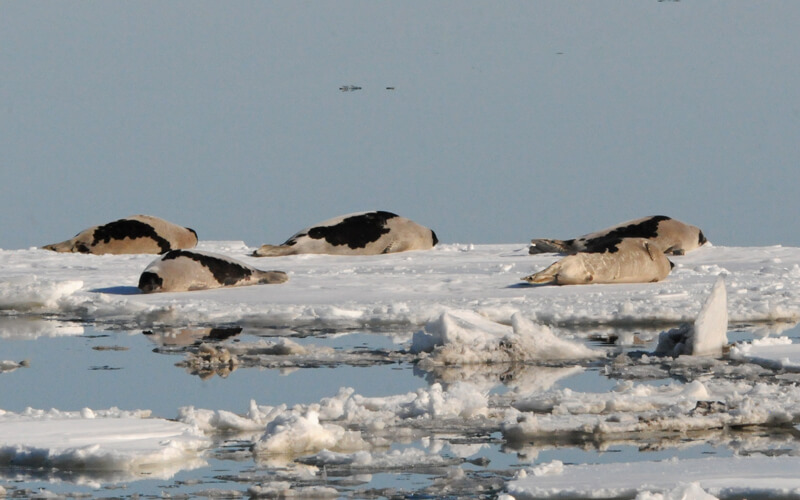Whether on shore, on the rocks or on ice, seals can appear throughout the Gulf of St. Lawrence or the Estuary. Their presence in winter sometimes comes as a surprise for the local residents that make up the Quebec Marine Mammal Emergency Response Network emergency line (1-877-722-5346). An out-of-water seal is unlikely to be in danger, but could be if you approach it. Here is a reminder of the rules of conduct (as well as to avoid being fined) to adopt should you observe a seal:
- It is against the law to disturb a seal.
- Maintain a distance of at least 50 m or even more, if possible.
- Do not try to feed it, which is also illegal; its survival depends on its ability to hunt fresh prey.
- Do not attempt to coax it back into the water. If a seal ventures onto dry land, there is a reason. It is possible that it simply wants or needs to rest, moult, or give birth, or perhaps that a predator is lurking in the water.
- Do not attempt to spray it with water; it does not need to be wet.
- If the seal grunts upon seeing a human, it is a sign that it is alert and is reacting to your presence. Consider it a reminder that you need to move away. Seals are capable of moving quickly and can be unpredictable. These are wild animals that can bite and transmit diseases.
- Keep your dog(s) on a leash, for the well-being of both your pet(s) and the seal.
- Did you know? A shivering seal is not necessarily ill; shivering generates heat. If the seal has visible injuries or other people are not following these instructions, promptly dial 1-877-722-5346.
Cute, but not always so cuddly!
The harp seal can reach 1.7 m and weigh up to 130 kg. It often rests on drifting and coastal ice. Be careful; this agile seal can move very quickly!
While the harbour seal, which is present year-round in the St. Lawrence, measures 1.5 metres long and weighs 100 kg, a hooded seal can measure up to 2.5 metres and tip the scales at 300 kg, not to mention its powerful jaw. It is usually found in the St. Lawrence in winter and is known for its ill-tempered nature. Your best bet in order not to disturb them is to maintain your distance and observe them from afar!








